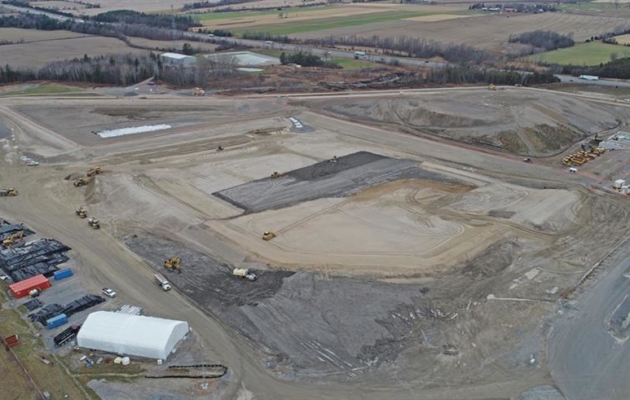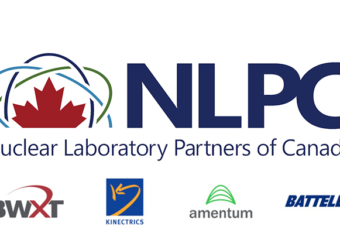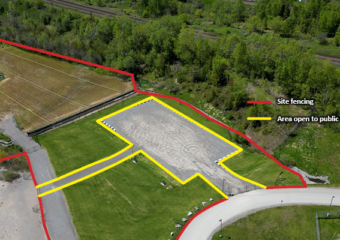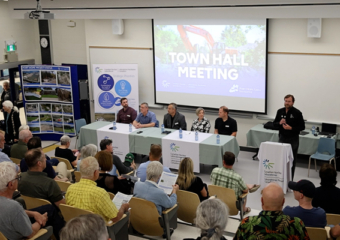More than one million tonnes of historic low-level radioactive waste has been safely transported to the Port Hope Long-Term Waste Management Facility (LTWMF), representing almost half of all the contaminated soil that is being removed from various locations in Port Hope, as part of Canada’s largest environmental cleanup – the Port Hope Area Initiative (PHAI). The PHAI involves the cleanup of approximately 1.2 million cubic metres of waste that was placed in various locations within the municipality, as a result of past radium and uranium refining activities by Eldorado Nuclear Limited beginning in the 1930s.
The movement of waste began in December 2017, when the first truckload of contaminated soil was transferred into the new engineered aboveground mound at the LTWMF, where it will be safely stored and monitored for hundreds of years.
That milestone represented a major step forward along the path to addressing the long-standing environmental issue, giving confidence to the Municipality of Port Hope and the community that CNL – the company undertaking the work on behalf of the Government of Canada – is moving the project forward in a safe and responsible manner.
“After more than a decade of planning, including consultation with the community and an Environmental Assessment, storage of the first load of historic low-level radioactive waste was a demonstration of Canada’s commitment to the community to safely clean up the waste,” said Scott Parnell CNL’s General Manager of the Historic Waste Program. “With over one million tonnes of waste now placed in safe storage, I am pleased to report that we continue to make significant strides towards the completion of the cleanup.”
Since that first load of soil was placed in the mound, waste has been relocated from various sites in Port Hope, including the now closed Welcome Waste Management Facility, temporary sites on the Centre Pier at the Lake Ontario shoreline, the Pine Street Extension near Highland Drive, and the Port Hope Harbour.
Waste from 40 privately owned properties, including residences, has also been removed and transferred to the mound, although the lion’s share of the private property cleanups are still to be completed as part of the project. The waste found on private properties were often used as fill and occur in isolated and deep pockets.
With three of the four mound’s storage cells completed at the LTWMF, work is underway on the fourth and largest cell which is expected to store the waste from the upcoming dredging of Port Hope Harbour.
“The cells have been carefully designed to ensure that the waste is safely stored to isolate the waste from the surrounding environment,” says Brodie Whitelaw, Manager at the Port Hope Long-Term Waste Management Facility. “From the engineered design and construction of the cells to the ongoing placement of waste, the work at the facility is complex and involves careful coordination with several contractors transporting waste from various separate sites,” adds Whitelaw.
“With the cleanup of multiple sites happening at the same time, the safe movement of waste along the designated PHAI transportation routes requires a high degree of coordination,” stressed Parnell. “We continue to work closely with the Municipality of Port Hope to minimize the impacts of the project on the community while we complete the final chapter in addressing this environmental issue in Port Hope.”
Residents and other members of the public are encouraged to contact CNL if they have questions or concerns and to visit PHAI.ca for up-to-date project information.




